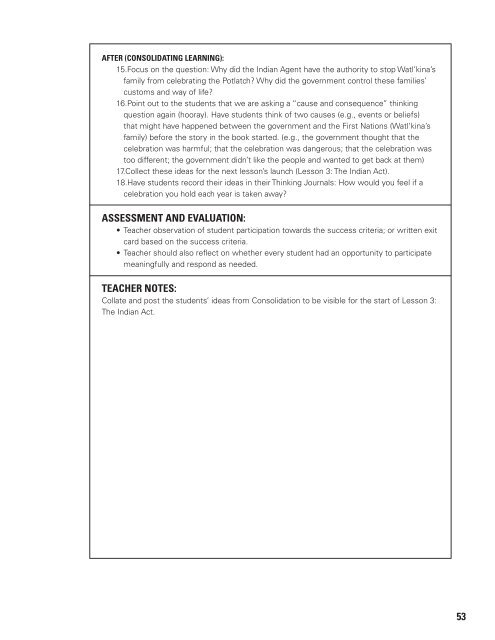Residential Residential
Residential_School
Residential_School
You also want an ePaper? Increase the reach of your titles
YUMPU automatically turns print PDFs into web optimized ePapers that Google loves.
AFTER (CONSOLIDATING LEARNING):<br />
15.Focus on the question: Why did the Indian Agent have the authority to stop Watl’kina’s<br />
family from celebrating the Potlatch? Why did the government control these families’<br />
customs and way of life?<br />
16.Point out to the students that we are asking a “cause and consequence” thinking<br />
question again (hooray). Have students think of two causes (e.g., events or beliefs)<br />
that might have happened between the government and the First Nations (Watl’kina’s<br />
family) before the story in the book started. (e.g., the government thought that the<br />
celebration was harmful; that the celebration was dangerous; that the celebration was<br />
too different; the government didn’t like the people and wanted to get back at them)<br />
17.Collect these ideas for the next lesson’s launch (Lesson 3: The Indian Act).<br />
18.Have students record their ideas in their Thinking Journals: How would you feel if a<br />
celebration you hold each year is taken away?<br />
ASSESSMENT AND EVALUATION:<br />
• Teacher observation of student participation towards the success criteria; or written exit<br />
card based on the success criteria.<br />
• Teacher should also reflect on whether every student had an opportunity to participate<br />
meaningfully and respond as needed.<br />
TEACHER NOTES:<br />
Collate and post the students’ ideas from Consolidation to be visible for the start of Lesson 3:<br />
The Indian Act.<br />
53


